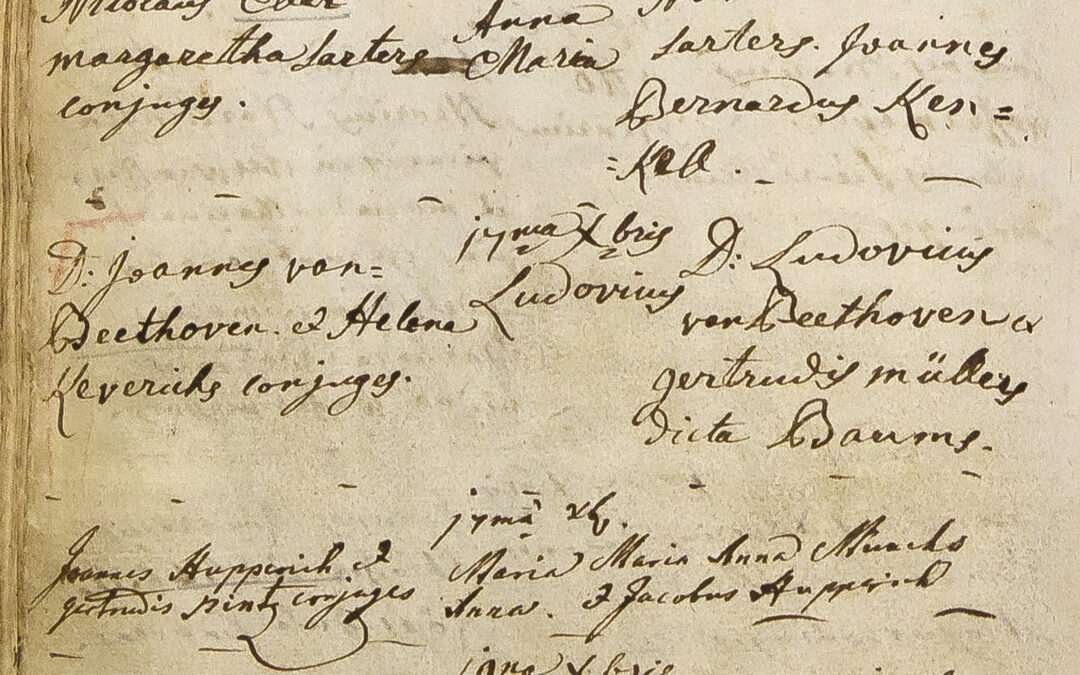
by Ursula Dillenburger-Brendt | Jun, 2025 | EN, Events, Music, tradition
On August 28th, the time has come: The Beethovenfest 2025 will open under the patronage of Hendrik Wüst, Minister-President of NRW, followed by over 100 events in and around Bonn until September 27th. During this time, the city of Bonn will be dedicated to its greatest son, Ludwig van Beethoven, and his music. The festival looks back on a long and rich history. It first took place in 1845 on the occasion of the ceremonial inauguration of the Beethoven monument on Bonn’s Münsterplatz. Composer Franz Liszt played a key role in its realisation, both as a financier and as artistic director of the entire celebration. He promptly devised a multi-day festival and, as conductor, designed the musical events in a concert hall specially built in 11 days. It was the beginning of a festival tradition that continues to this day. Initially held only on important Beethoven anniversaries, pianist Elly Ney established a regular schedule for the festival in the 1930s. Since the construction of the new Beethoven Hall in 1959, it has taken place every two to three years, and since 1999, every autumn for four weeks. The people of Bonn support the festival with two associations, the “Freundeskreis Beethovenfest Bonn e.V.” and the “Bürger für Beethoven“, and with their regular attendance.
The festival has always seen itself as a bridge between tradition and innovation, treating Beethoven’s works not as a museum opus, but as a source of inspiration for musical exploration. Beethoven’s pieces are performed, reinterpreted and juxtaposed with contemporary music. Furthermore, commissions encourage a modern, direct engagement.
This year’s festival motto “Alles ultra”, loosely adapted from J.W. von Goethe, is fitting. The slogan stands for the pursuit of new things, creative innovation, and the pushing of boundaries. While Goethe denounced the excesses of his contemporaries as a problematic development resulting in disorientation and mediocrity with “Everything but… is now ultra! Everything transcends unstoppably, in thought as well as in action” in 1825, in Bonn 2025, “Everything ultra” is reinterpreted and understood not only as an interpretation of world events but above all as an expression of Beethoven’s nature and his musical genius. For it was precisely the nonconformist Beethoven who often took uncharted paths and actively and innovatively approached the future. Appropriately, artistic director Steven Walter is promising “around 100 events to celebrate our colourful, vibrant, and, despite all the social concerns, also full of opportunities. A festival is dedicated to human diversity, the positively crazy, and the humanistic “ultras” – entirely in the spirit of Beethoven” and promises: “The Beethovenfest Bonn 2025 will be loud, it will be surprising, it will be chic, it will be moving – and certainly ultra!” – Well then!
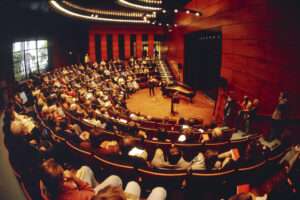 If you look through the Beethovenfest program, you will indeed discover a lively potpourri of concert forms. As expected, there are the major symphony concerts at the Opera House by famous orchestras playing works by Beethoven (2nd, 3rd, 5th, 6th, 7th, 8th Symphonies as well as the Violin Concerto – after all, it is still the Beethovenfest), but also symphonic works by Mozart, Shostakovich, Stravinsky, and others. Also notable are the many chamber concerts taking place at a wide variety of venues: Classical chamber music, with piano and string ensembles, is primarily represented in the Chamber Music Hall of the Beethovenhaus. At the other venues performances are mixed according to the motto “Anything but classical” where unusual, new and even improvised interplay between various instruments creates unusual yet fascinating sound experiences. For example, the Kreuzkirche offers cross-genre soundscapes, a walk-in musical theatre and relaxed after-work concerts. The “Pantheon,” “Harmonie,” and “Haus der Springmaus” cabaret theatres offer a colourful mix of performances, and percussion concerts are popular at the Dransdorf tram station.
If you look through the Beethovenfest program, you will indeed discover a lively potpourri of concert forms. As expected, there are the major symphony concerts at the Opera House by famous orchestras playing works by Beethoven (2nd, 3rd, 5th, 6th, 7th, 8th Symphonies as well as the Violin Concerto – after all, it is still the Beethovenfest), but also symphonic works by Mozart, Shostakovich, Stravinsky, and others. Also notable are the many chamber concerts taking place at a wide variety of venues: Classical chamber music, with piano and string ensembles, is primarily represented in the Chamber Music Hall of the Beethovenhaus. At the other venues performances are mixed according to the motto “Anything but classical” where unusual, new and even improvised interplay between various instruments creates unusual yet fascinating sound experiences. For example, the Kreuzkirche offers cross-genre soundscapes, a walk-in musical theatre and relaxed after-work concerts. The “Pantheon,” “Harmonie,” and “Haus der Springmaus” cabaret theatres offer a colourful mix of performances, and percussion concerts are popular at the Dransdorf tram station.
The Beethovenfest Bonn has always been distinguished by its international appeal and high artistic quality. The program serves as a platform for encounters and artistic exchange between renowned musicians and up-and-coming young talents. As part of the Fellowship Program and the Beethoven Talents program, young musicians are given the opportunity to make the leap to the stage with exclusive master classes, coaching, and concerts. Bonn pianist Fabian Müller, now a star of the Bonn music scene, has already taken this path. He will be represented at the Beethovenfest with five concerts. He will conduct his own orchestra with Beethoven’s Symphonies Nos. 2 and 3 and, over four evenings, he will complete his project to play all 32 Beethoven sonatas, spread across two festivals. He will precede each Beethoven work with his own musical preface. Listening to him is a pleasure, and attending one of his concerts is highly recommended.
“Alles Ultra” from August 28 to September 27, 2025, in Bonn? The Beethovenfest, with its blend of traditional and innovative, will offer us a sizzling mix where everyone is sure to find something for themselves and can even be tempted to try something new. I’m looking forward to it!
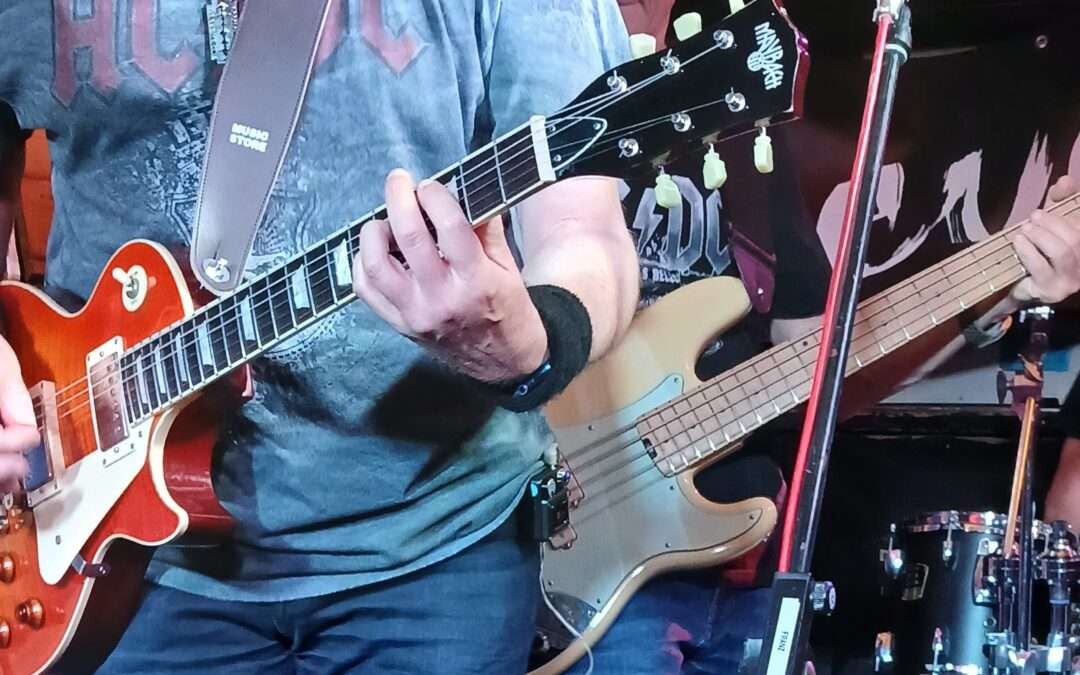
by Helga Stark | Jun, 2025 | EN, Events, Music
Most people think of Beethoven and classical music when they think of Bonn, but Bonn also has a lot to offer in terms of other genres of music.
Back in the 60s and 70s, Bonn was a hotspot for music, and even Queen, who were still unknown at the time, performed at the Club Underground. Other bands also made this music club famous. Even though the Underground had to close after only three years and other so-called beat clubs also did not survive, the spirit of that time can still be felt in the city today.
Bonn has numerous pubs where live bands perform (e.g. Kater 26, Session, Namenlos, Mausefalle 33 1/3… and many more). Every Thursday, Session hosts a jam session with local blues musicians that is definitely not to be missed! Music performances are also becoming increasingly common on small stages such as the Rheinbühne and the Pantheon.
A special highlight in Bonn-Endenich is the Harmonie. This music hall-style venue hosts live performances by artists of various genres from September to May. If you’re interested, take a look here. Even WDR Rockpalast still records concerts in this great hall, where photos on the walls show which music greats have played here.
The outdoor music season generally starts at the beginning of May with ‘Rhein in Flammen’ (Rhine in Flames) where several stages ensure that everyone from hard rockers to lovers of Cologne music get their money’s worth. And it’s free and outdoors, like so much else in Bonn.
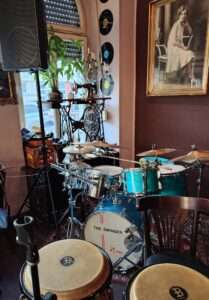 The concerts in the beer garden of the Parkrestaurant Rheinaue are also an integral part of the Bonn summer, with cover bands performing almost daily from mid-July to the end of August and Latin music on Sundays. More information is available here.
The concerts in the beer garden of the Parkrestaurant Rheinaue are also an integral part of the Bonn summer, with cover bands performing almost daily from mid-July to the end of August and Latin music on Sundays. More information is available here.
The Bonn City Garden offers a wide variety of musical events in August.
In August, the younger generation can look forward to the two-day Green Juice Festival with indie, pop, rock and a colourful supporting programme.
At Jeck im Sunnesching you can see people in carnival costumes parading through Bonn in the middle of summer!
The big names in music can be found at Kunstrasen. From BAP (sold out) to Lynnard Skynnard and Deichkind, there are some high-quality concerts.
In Bad Godesberg, don’t miss ‘Musik im Park’ and Musik unter der Zeder.
In Beuel, established musicians and up-and-coming artists perform at ‘Musik auf der Treppe’.
Bonn has music in every corner and city council even has a representative for rock and pop! This list is certainly not exhaustive and is influenced by the author’s age and musical taste 🙂 So, music lovers will get their money’s worth in Bonn, and why not combine a concert with a Greet?
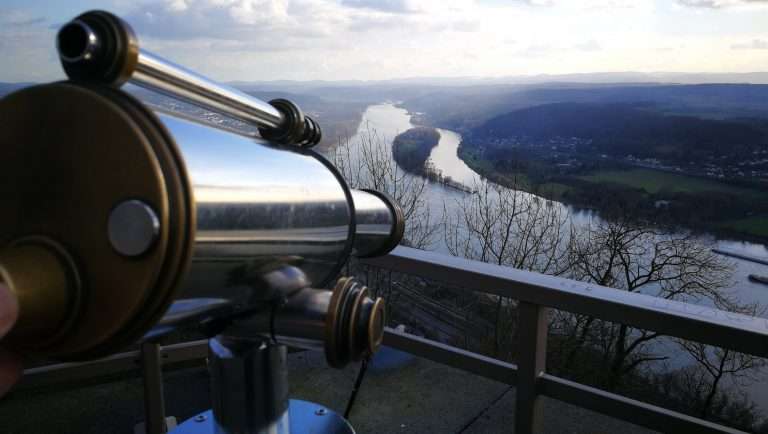
by Gert Fischer | May, 2025 | EN, famous people from Bonn, history
Apart from the seemingly inevitable local crime novels and a few autobiographical special cases, Bonn hardly ever appears as the setting for a novel. This also applies to its years as the capital city of Germany. Of the few novels that deal with the politics of the ‘Bonn Republic,’ Wolfgang Koeppen’s ‘Das Treibhaus’ (The Greenhouse) alone satisfies the highest literary standards as a roman à clef of the young Federal Republic. Unfortunately, it is hardly known outside Germany.
This means that Bonn makes only one appearance in world literature. It was created by John Le Carré (actually David John Moore Cornwell, 1931-2020) in his novel ‘A Small Town in Germany’, published in 1968. The author of The Spy Who Came in from the Cold and literary father of George Smiley is usually classified as a writer of pulp fiction in Germany. In the English-speaking world, he is rightly regarded as one of the most important authors of the recent past.
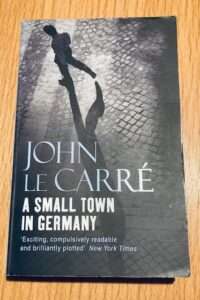 A Small Town in Germany is one of Le Carré’s lesser-known books. This may be because, unlike most of his works from the 1960s and 1970s, it does not revolve around the theme of the Cold War and does not feature the anti-Bond character George Smiley. Instead, the plot is embedded in the domestic politics of the Federal Republic of Germany and is therefore less accessible to an international audience than the global East-West conflict. It is set exclusively in Bonn and its immediate surroundings. Le Carré draws on his own experiences. From 1961 to 1963, he was stationed in Germany by the British Secret Service working undercover as Second Secretary at the British Embassy in Bonn. At that time writing was a part-time endeavour.
A Small Town in Germany is one of Le Carré’s lesser-known books. This may be because, unlike most of his works from the 1960s and 1970s, it does not revolve around the theme of the Cold War and does not feature the anti-Bond character George Smiley. Instead, the plot is embedded in the domestic politics of the Federal Republic of Germany and is therefore less accessible to an international audience than the global East-West conflict. It is set exclusively in Bonn and its immediate surroundings. Le Carré draws on his own experiences. From 1961 to 1963, he was stationed in Germany by the British Secret Service working undercover as Second Secretary at the British Embassy in Bonn. At that time writing was a part-time endeavour.
As Le Carré once remarked elsewhere, the plot takes place in the ‘near future’ from the year the book was published – if you look closely: in May 1970. The political panorama that forms the backdrop is bleak. Le Carré composes it from elements that helped shape the domestic politics of the Federal Republic in the 1960s, adding fictional and exaggerated elements to create an ugly dystopia: the grand coalition is still in power. The opposition FDP is infiltrated by shady figures with roots in the Nazi era. There is a powerful political alliance between the student movement and what we would today call right-wing populists. The target of their hatred is Great Britain. The Bundestag is still debating emergency laws, an amnesty for Nazi criminals comes into force, and accession negotiations between the EEC and Great Britain are going badly in Brussels. The country is on the brink of major unrest.
In this situation, a troubleshooter arrives in Bonn from London. A junior embassy employee has disappeared, apparently gone into hiding. Suspicions of espionage are rife. Alan Turner is tasked with getting to the bottom of the matter. Over the course of several weeks in May, he scrutinises the embassy’s operations, uncovers some of the staff’s dirty secrets and gets closer and closer to the man he is looking for, his character and his motives. This man is, if you will, the real protagonist of the novel. Yet he hardly ever appears in the book – only briefly at the beginning and end. This much can be revealed: it does not end well.
Le Carré’s picture of Bonn is as bleak as the plot. It begins with the weather – although it is May, it is consistently hazy and damp. There is no sign of warmth, and much of the action takes place at night. Le Carré anticipates an atmosphere that J.K. Rowling’s dementors would later spread. The city is cramped and narrow-minded – just like the republic that gave birth to it. This image is further embellished with all the prejudices that have always hurt Bonn’s local patriots: it rains, or the railroad crossing barriers are down; the nightlife is in Cologne; Bonn became the capital because Adenauer wanted it to be; it’s a waiting room for Berlin, etc. The tongue-in-cheek humour with which these sayings were often accompanied in Bonn is completely absent. The author is deadly serious. He even invents his own nastiness. In Bonn, even the flies are civil servants.
Woven into the backdrop of the book are many detailed descriptions. They range from the university and the railway station to the town hall and the British Embassy (sacrificed to Telekom in 2004) to the diplomatic settlements in Plittersdorf and Bad Godesberg. The protagonist lives on the slopes of the Petersberg, and the traffic problems are closely observed. Anyone reading the novel from this perspective may notice how Le Carré alters the city’s geography and even individual buildings to suit the needs of the plot. And, of course, he describes the buildings and structures as he remembers them from the early 1960s. They no longer correspond to the Bonn of 1970, let alone to the Bonn of today. Such a search for clues is great fun!
Why Bonn comes across so negatively in its only appearance in world literature remains an open question. It may have something to do with Le Carré’s bad memories of his time in Bonn. And, of course, it is also due to the dark subject matter. It may be comforting to know that he actually shows all the locations in his books from their ugly side. And perhaps there is a tiny grain of truth in his Bonn.
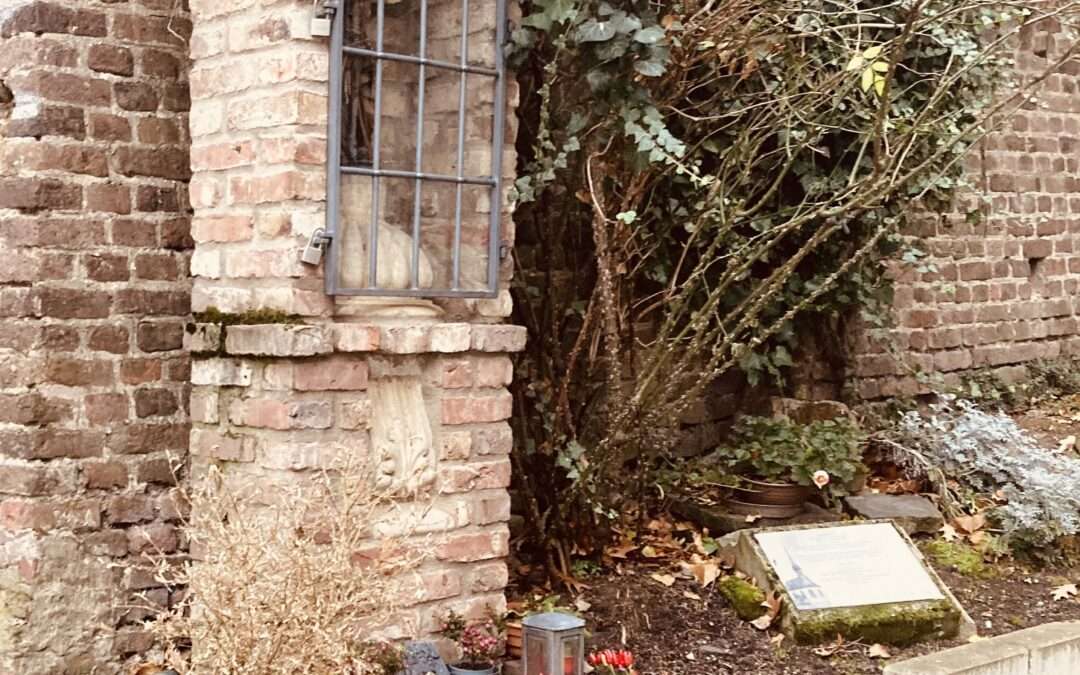
by Gert Fischer | May, 2025 | architecture, EN, Rhine region
Anyone strolling along Bonn’s Rhine promenade usually has their eyes fixed on the river and the sights on the horizon: the Siebengebirge mountains, the government district or the Schwarzrheindorfer Doppelkirche church, for example. But it’s worth taking a look to the right at the landing stage of the ‘Köln-Düsseldorfer’ shipping line. At the lower end of Vogtsgasse, in the shadow of the retaining wall of the Department of History, there is a small wayside shrine. It commemorates the Gertrudis Chapel, which stood a few metres away and has now been almost forgotten. Like the entire old town of Bonn, it was destroyed in the air raid of 18 October 1944. What remained of it was literally buried in the rubble. Shortly after the war, the mountains of debris in the city centre were used to raise the area between Belderberg and the banks of the Rhine by several metres. Unattractive new buildings from the 1950s were erected on what was once the ‘Rheinviertel’ (Rhine district).
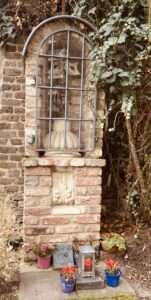
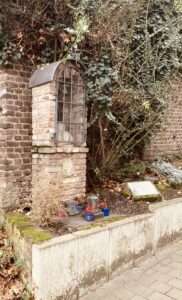 The chapel was dedicated to Saint Gertrude of Nivelles, who lived in the first half of the 7th century. As a patron saint, she had a very broad portfolio. She was invoked against plagues of rats and mice (hence the mice as her attribute), and was considered the protector of travellers, pilgrims and sailors, gardeners, spinners and even cats. In addition, her historically documented commitment to nursing and the education of girls and women is still remembered today.
The chapel was dedicated to Saint Gertrude of Nivelles, who lived in the first half of the 7th century. As a patron saint, she had a very broad portfolio. She was invoked against plagues of rats and mice (hence the mice as her attribute), and was considered the protector of travellers, pilgrims and sailors, gardeners, spinners and even cats. In addition, her historically documented commitment to nursing and the education of girls and women is still remembered today.
It was probably these diverse connections that brought together a rather unlikely cooperation: the ‘Schiffer-Verein Beuel 1862’ (Beuel Boatmen’s Association), the Bonn Women’s Museum and the Bonn drag artist Curt Delander joined forces to ensure that the wayside shrine was built in memory of the chapel. It was built from bricks from the destroyed old town and stones from the St. Gertrudis Church in Nivelles (Belgium), which was destroyed by German bombs. This makes it a small memorial to peace, and it also reminds us that reconciled enemies drank the ‘St. Gertrudis Minne’ in the Middle Ages.
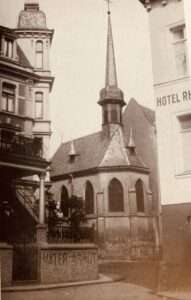 The building, which was destroyed in 1944, was not an architectural gem and no longer had any great spiritual significance. It was a simple single-nave hall building from the 15th century with modest furnishings. It was originally located directly behind the city wall next to the ‘Gierpforte’ whose name is derived from ‘Gertrud’. Even after the wall was demolished in the 19th century, there was no unobstructed view of the Rhine. A hotel building between the riverbank and the chapel ensured that the backyard situation remained unchanged. The parish church of the district was St. Remigius on what is now Remigiusplatz, with the Gertrudiskapelle chapel merely a branch. For a long time, its main users were the local boatmen and their brotherhood. This Cinderella existence may explain why there was hardly any opposition to the demolition of the little church.
The building, which was destroyed in 1944, was not an architectural gem and no longer had any great spiritual significance. It was a simple single-nave hall building from the 15th century with modest furnishings. It was originally located directly behind the city wall next to the ‘Gierpforte’ whose name is derived from ‘Gertrud’. Even after the wall was demolished in the 19th century, there was no unobstructed view of the Rhine. A hotel building between the riverbank and the chapel ensured that the backyard situation remained unchanged. The parish church of the district was St. Remigius on what is now Remigiusplatz, with the Gertrudiskapelle chapel merely a branch. For a long time, its main users were the local boatmen and their brotherhood. This Cinderella existence may explain why there was hardly any opposition to the demolition of the little church.
Despite its unattractive exterior and its minor importance at the time, the Gertrudiskapelle was considered the ‘most distinguished’ church in Bonn after the cathedral in the oral tradition of the 19th century. Even back then, this statement did not fit with what was known about its history: first mentioned in 1258, a small hermitage of Cistercian nuns, later a temporary home for Capuchin and Franciscan Recollect monks – each before they moved into their spacious new monasteries. In 2010/11, an archaeological excavation with sensational results revealed just how much truth there can be in oral tradition. It found the remains of two previous buildings – the earliest dating from the 8th century and thus Carolingian and about as old as the two oldest inner-city parish churches, St. Remigius and St. Martin. It is very likely that this first chapel was dedicated to St. Gertrude. This can be deduced from the fact that, like Remigius and Martin, the name was often used for churches in the Carolingian period – no wonder, since the historical Gertrude was one of the leading figures in the lineage of Charlemagne.
We do not know whether this first Gertrudis Chapel was built as a parish church or whether it has a different origin. In any case, by the middle of the twelfth century, it must have been the spiritual centre of a fairly extensive settlement along the Rhine, as evidenced by archaeological finds. This settlement lost much of its importance during the Middle Ages, and with it the Church of St. Gertrude. Today, the small wayside shrine on Vogtsgasse is the last link to this period.
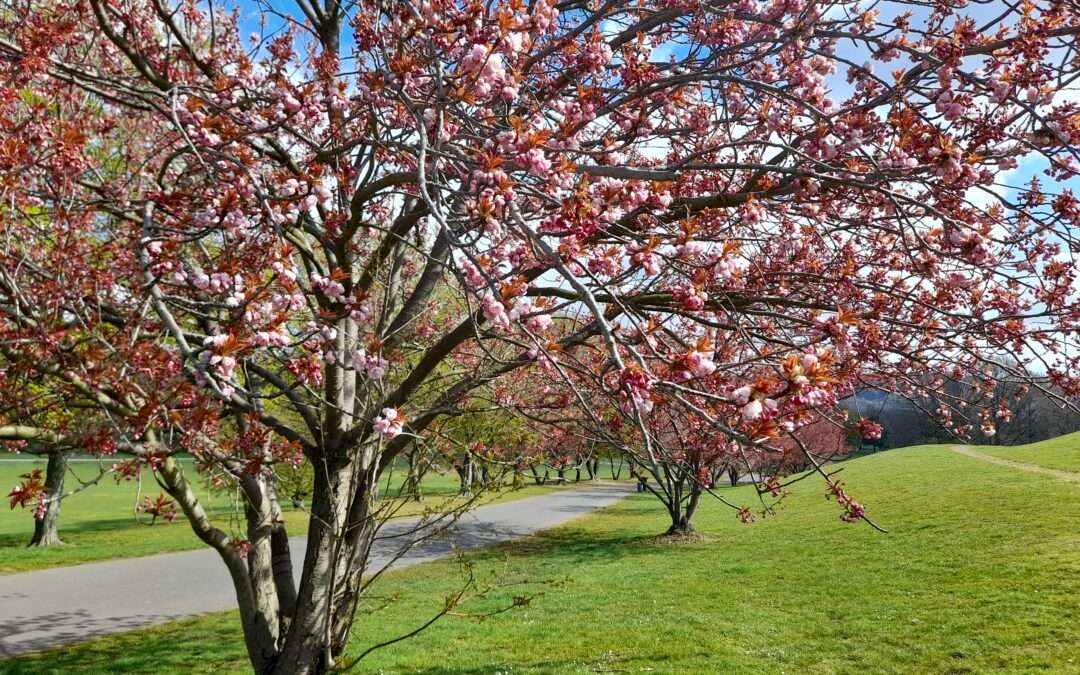
by Helga Stark | Apr, 2025 | Bonn Sights, EN, points of interest, tradition
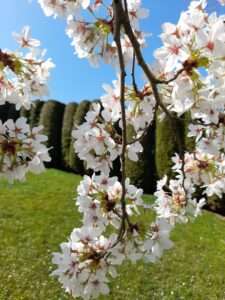 In the first phase the white-flowered cherries, such as the plum cherry in Wolfstraße, Franzstraße or in the Rheinaue, bloom. After that it takes about 14 days for the thick pink-flowered Japanese flowering cherries (especially in Breite Straße and Heerstraße) to delight the eye.
In the first phase the white-flowered cherries, such as the plum cherry in Wolfstraße, Franzstraße or in the Rheinaue, bloom. After that it takes about 14 days for the thick pink-flowered Japanese flowering cherries (especially in Breite Straße and Heerstraße) to delight the eye.
How did Bonn get these magnificent cherries in the first place? In the 1980s, the Old Town (which is actually the Nordstadt and was only renamed ‘Old Town’ for tourist reasons) was redeveloped. Traffic was forced to slow down and Japanese cherries were planned to provide a splash of colour. The cherry trees were a gift from the Japanese government to Bonn and the city planner Brigitte Denkel made sure that they were planted. The cherry blossoms symbolise the friendship between Japan and Germany.
In many cultures, cherry blossoms have a special symbolic meaning, especially in Japan, where they are a symbol of beauty, transience and new beginnings.
On weekends there is also a flea market, design market and food market, which attract tens of thousands of people on the streets. All the shops, cafés and pubs in the area are prepared for the crowds. Those who prefer it quieter come during the week, in the morning or evening. Night photos of the cherry blossoms are also worth the visit after hours.
If you don’t want to plunge into the hustle and bustle, you can find Japanese cherry trees in Beuel, for example, on Professor-Neu-Allee or in the Rheinaue park.
My personal favourite cherry blossom spot is a small avenue in the Rheinaue near the Japanese garden: these cherry trees were donated by a Japanese choir that performs Beethoven’s ‘Ode to Joy’ every year with about 5,000 singers. The cherry trees were a gift in honour of Beethoven’s birthplace. Beethoven is as revered in Japan as the cherry blossom, but that’s another story…
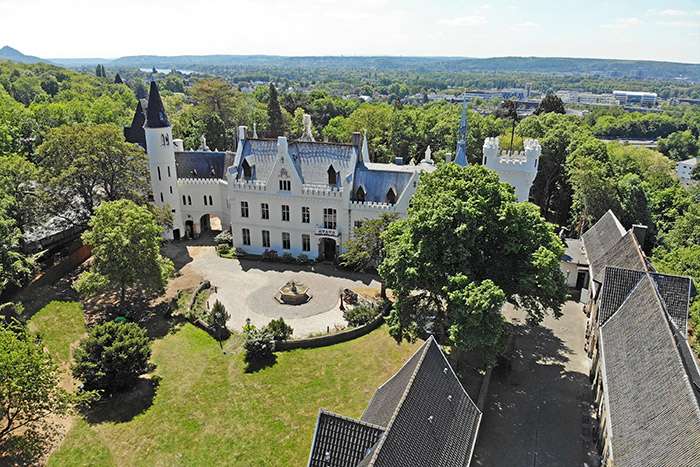
by Marisa De Luca | Mar, 2025 | architecture, EN, points of interest, Rhine region
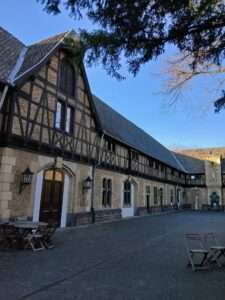 From the terrace of the castle, you can see as far as Cologne Cathedral and, of course, the whole of Bonn. The view, under a bright blue sky, is truly magical. Fortunately in the 1970s a citizens’ initiative was able to save the castle from demolition with a view to construct a motorway junction.
From the terrace of the castle, you can see as far as Cologne Cathedral and, of course, the whole of Bonn. The view, under a bright blue sky, is truly magical. Fortunately in the 1970s a citizens’ initiative was able to save the castle from demolition with a view to construct a motorway junction.
The castle has had a chequered history since it was built as the headquarters of the Teutonic Order in the 13th century in connection with the Crusades. Until secularisation in 1803, it was the economic base of the Teutonic Order and then the seat of several noble families. The remarkable architecture that can be seen today was created in a predominantly neo-Gothic style after a major fire broke out during reconstruction in 1842.
Among the numerous owners, the first youthful resident, Baroness von Francq (stepdaughter of the then owner, Prince Joseph zu Salm-Reifferscheidt-Dyck), deserves special mention. She lived in the castle from 1861 to 1881 and left her mark on the castle, which had since been spruced up with the addition of an English-style extension – at that time the rooms for the ladies – and the expansion of the extensive Ennert Park, including the planting of exotic trees. She also had some of the furnishings installed, which were unusually modern for the time, such as a powder room on the upper floor.
Another owner, Albert Moritz Freiherr von Oppenheim, also left his mark. As a banker and art collector, he was responsible for the interior design of the castle, which is particularly evident in the stairwell and in today’s restaurant. This heritage – wall panelling and historicist-style ceiling mouldings – was gradually restored by the new owners after the building was used by various institutions after the Second World War. The result is an extraordinary hotel and restaurant, and further rooms on the upper floor are being restored while business continues. Today, people are proud of the fact that Tina Turner liked to stay in a suite in the white tower, away from the hustle and bustle of Cologne, and that other celebrities, sheikhs with their families or guests from the worlds of business and politics now also stay here.
Since 2017, a Cologne restaurateur and an investment company have been running the extraordinary restaurant, hotel and the coach house for events. It is even possible to have a civil wedding here at the Schlosshotel Kommende. It’s definitely worth a visit!

 If you look through the Beethovenfest program, you will indeed discover a lively potpourri of concert forms. As expected, there are the major symphony concerts at the Opera House by famous orchestras playing works by Beethoven (2nd, 3rd, 5th, 6th, 7th, 8th Symphonies as well as the Violin Concerto – after all, it is still the Beethovenfest), but also symphonic works by Mozart, Shostakovich, Stravinsky, and others. Also notable are the many chamber concerts taking place at a wide variety of venues: Classical chamber music, with piano and string ensembles, is primarily represented in the Chamber Music Hall of the Beethovenhaus. At the other venues performances are mixed according to the motto “Anything but classical” where unusual, new and even improvised interplay between various instruments creates unusual yet fascinating sound experiences. For example, the Kreuzkirche offers cross-genre soundscapes, a walk-in musical theatre and relaxed after-work concerts. The “Pantheon,” “Harmonie,” and “Haus der Springmaus” cabaret theatres offer a colourful mix of performances, and percussion concerts are popular at the Dransdorf tram station.
If you look through the Beethovenfest program, you will indeed discover a lively potpourri of concert forms. As expected, there are the major symphony concerts at the Opera House by famous orchestras playing works by Beethoven (2nd, 3rd, 5th, 6th, 7th, 8th Symphonies as well as the Violin Concerto – after all, it is still the Beethovenfest), but also symphonic works by Mozart, Shostakovich, Stravinsky, and others. Also notable are the many chamber concerts taking place at a wide variety of venues: Classical chamber music, with piano and string ensembles, is primarily represented in the Chamber Music Hall of the Beethovenhaus. At the other venues performances are mixed according to the motto “Anything but classical” where unusual, new and even improvised interplay between various instruments creates unusual yet fascinating sound experiences. For example, the Kreuzkirche offers cross-genre soundscapes, a walk-in musical theatre and relaxed after-work concerts. The “Pantheon,” “Harmonie,” and “Haus der Springmaus” cabaret theatres offer a colourful mix of performances, and percussion concerts are popular at the Dransdorf tram station.
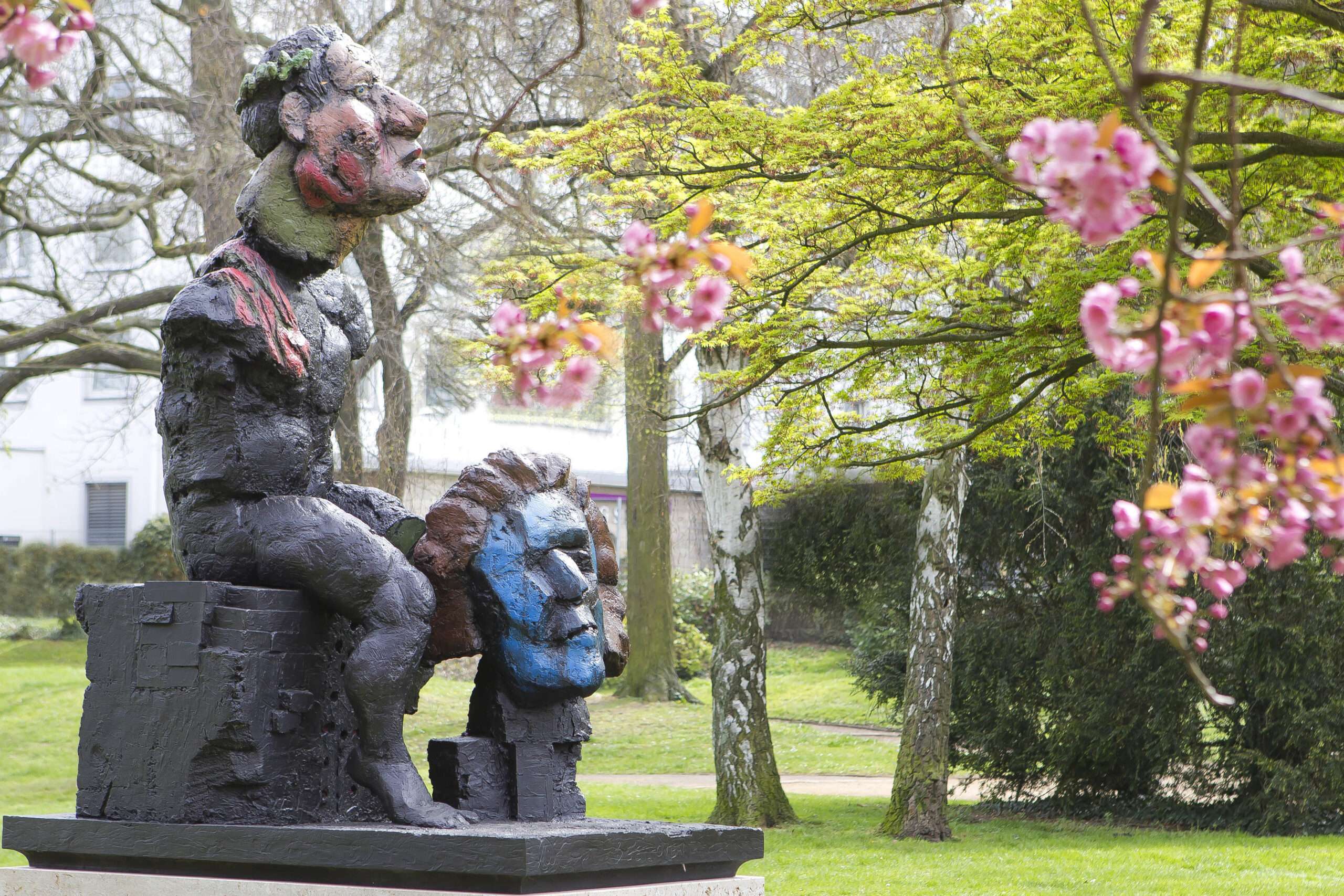
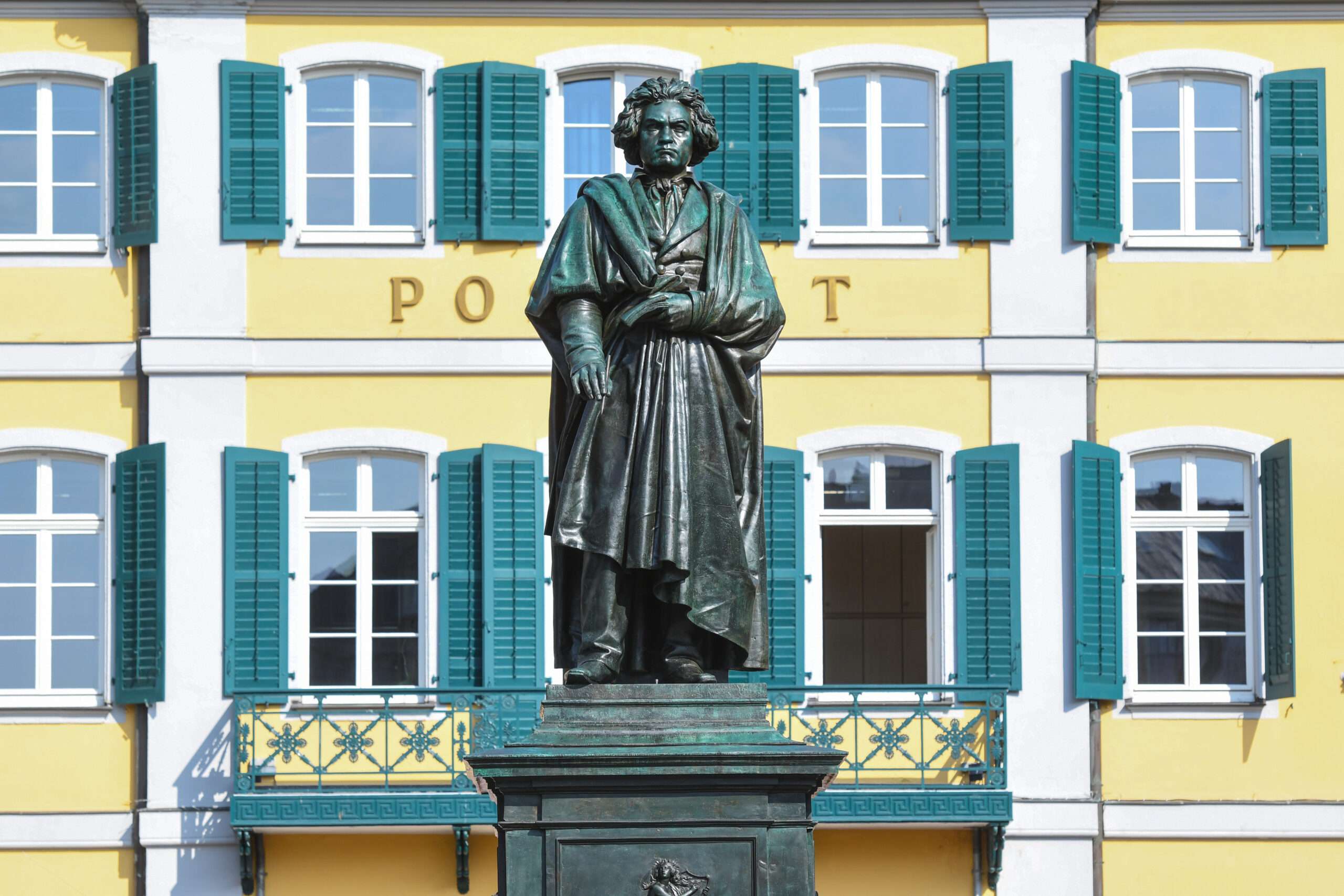
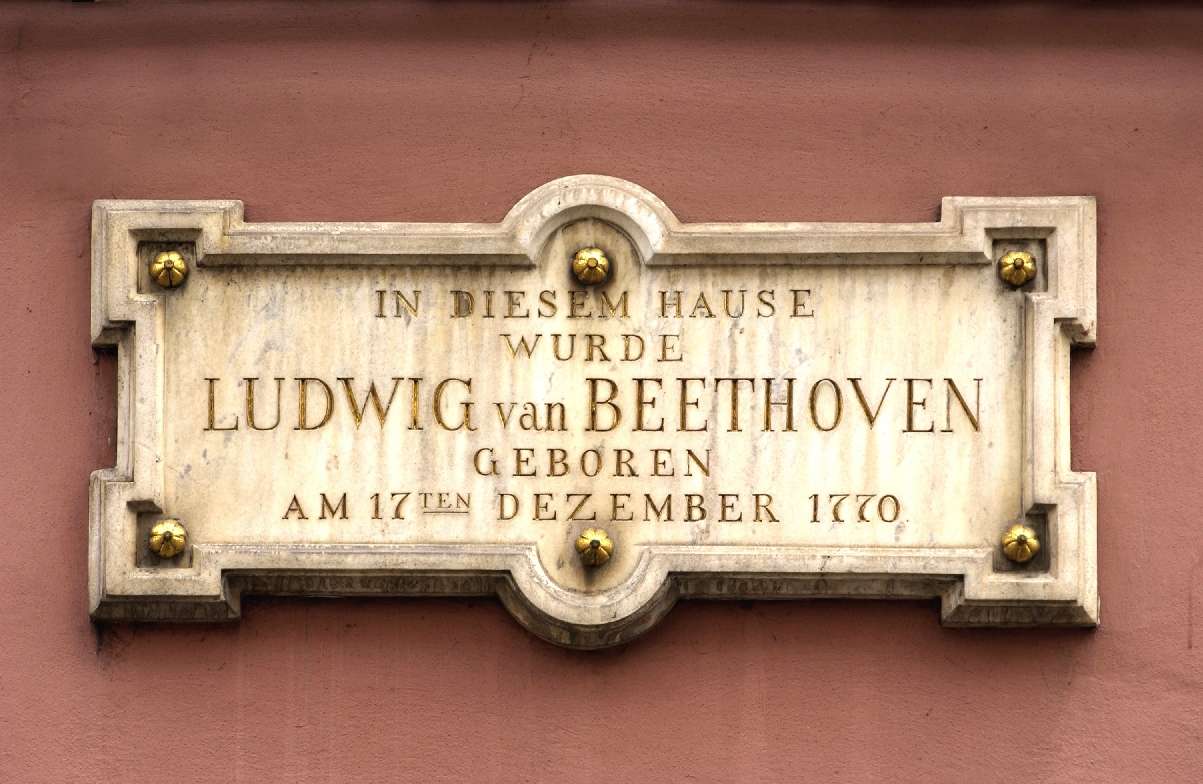

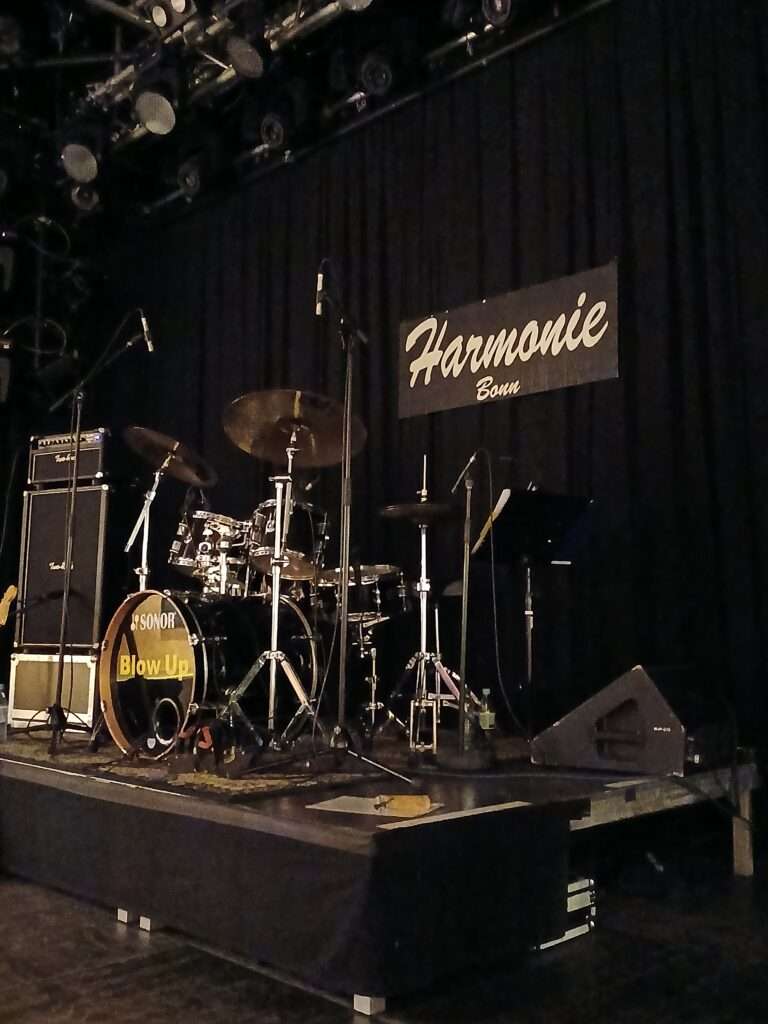
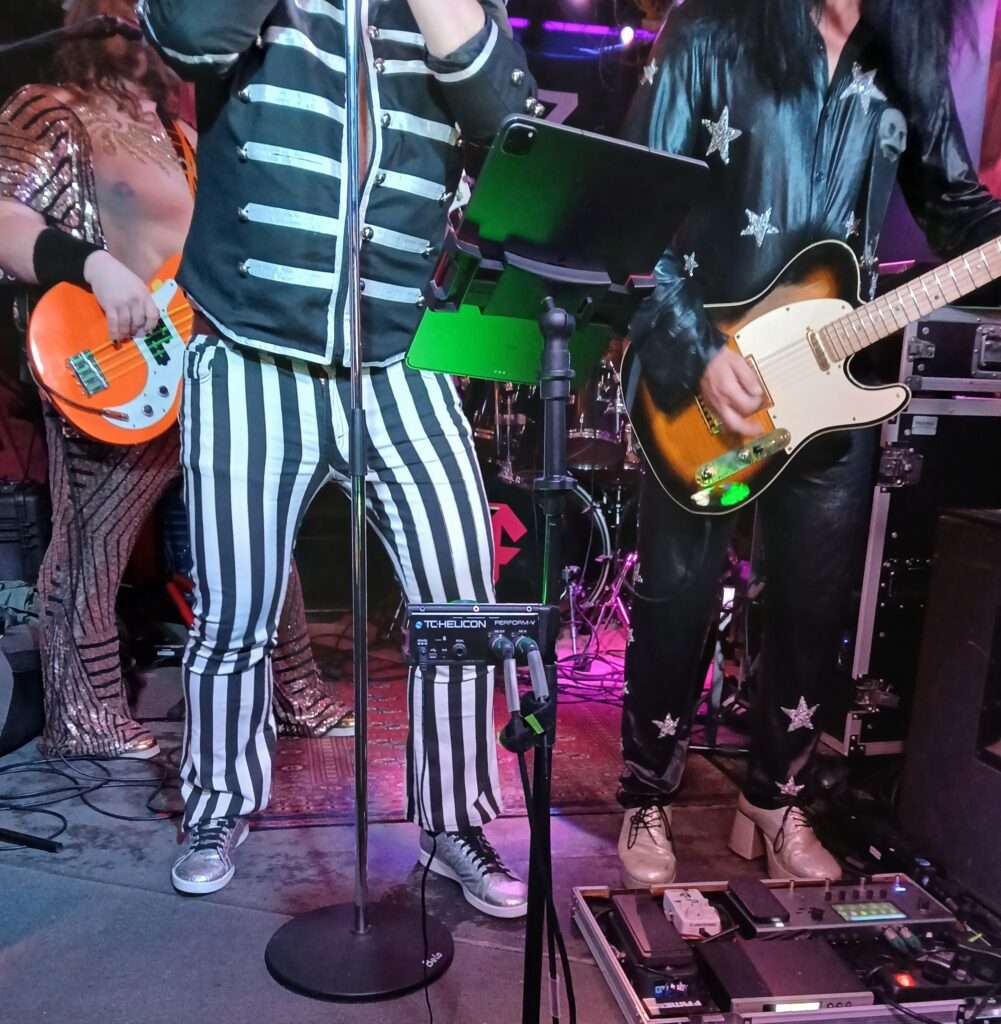
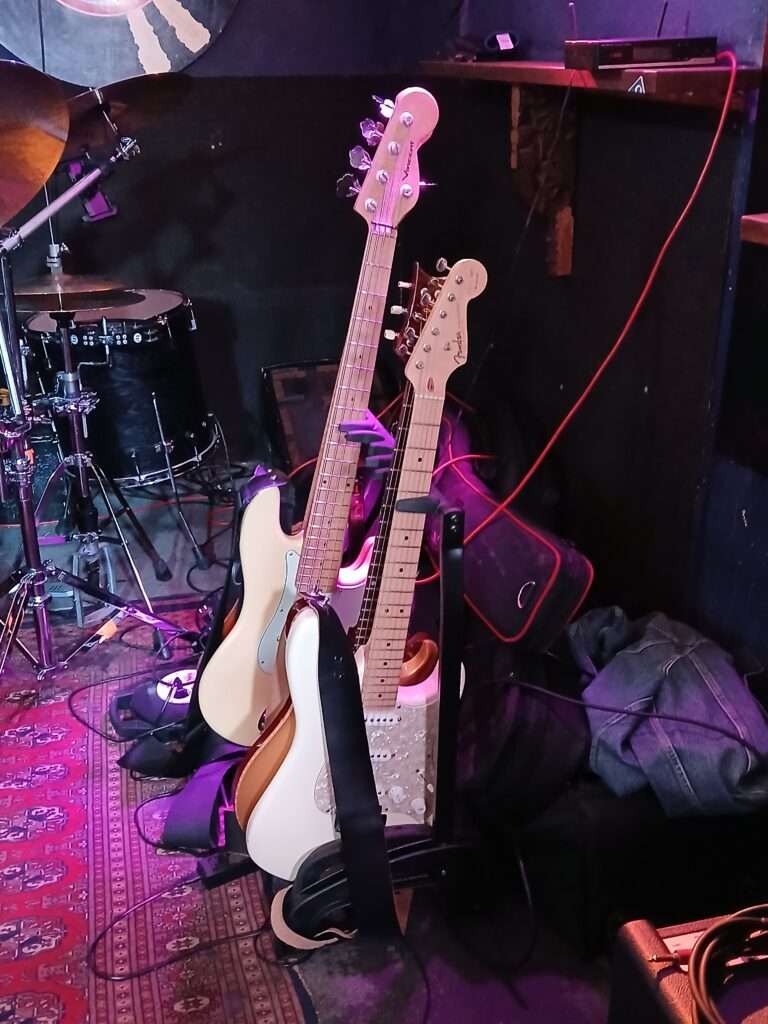
 The concerts in the beer garden of the Parkrestaurant Rheinaue are also an integral part of the Bonn summer, with cover bands performing almost daily from mid-July to the end of August and Latin music on Sundays. More information is available
The concerts in the beer garden of the Parkrestaurant Rheinaue are also an integral part of the Bonn summer, with cover bands performing almost daily from mid-July to the end of August and Latin music on Sundays. More information is available 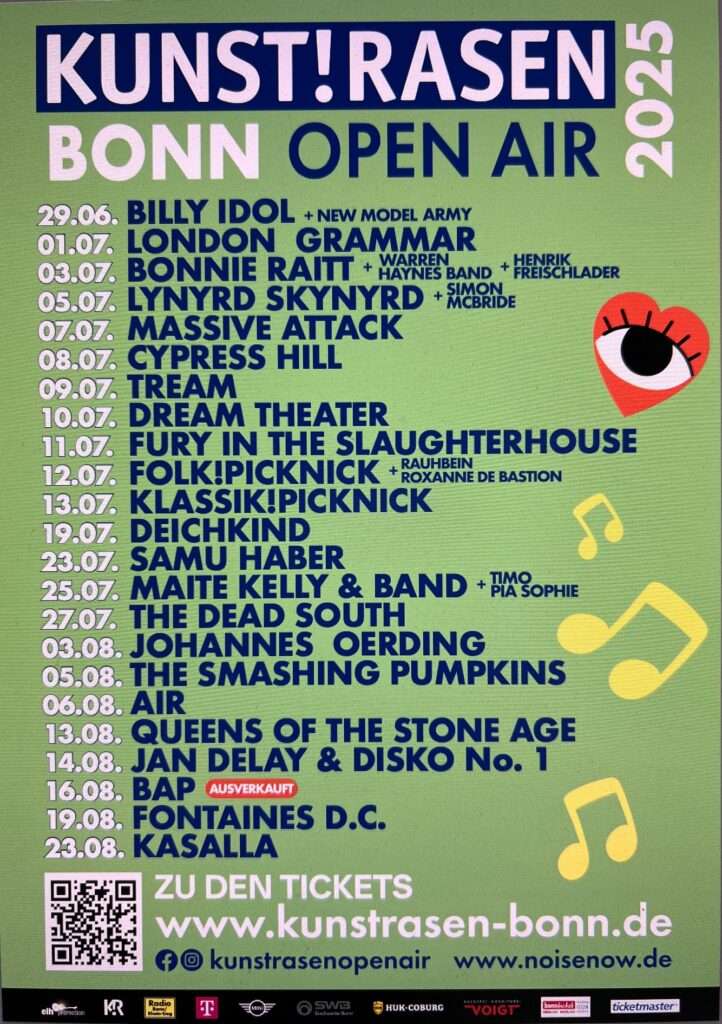
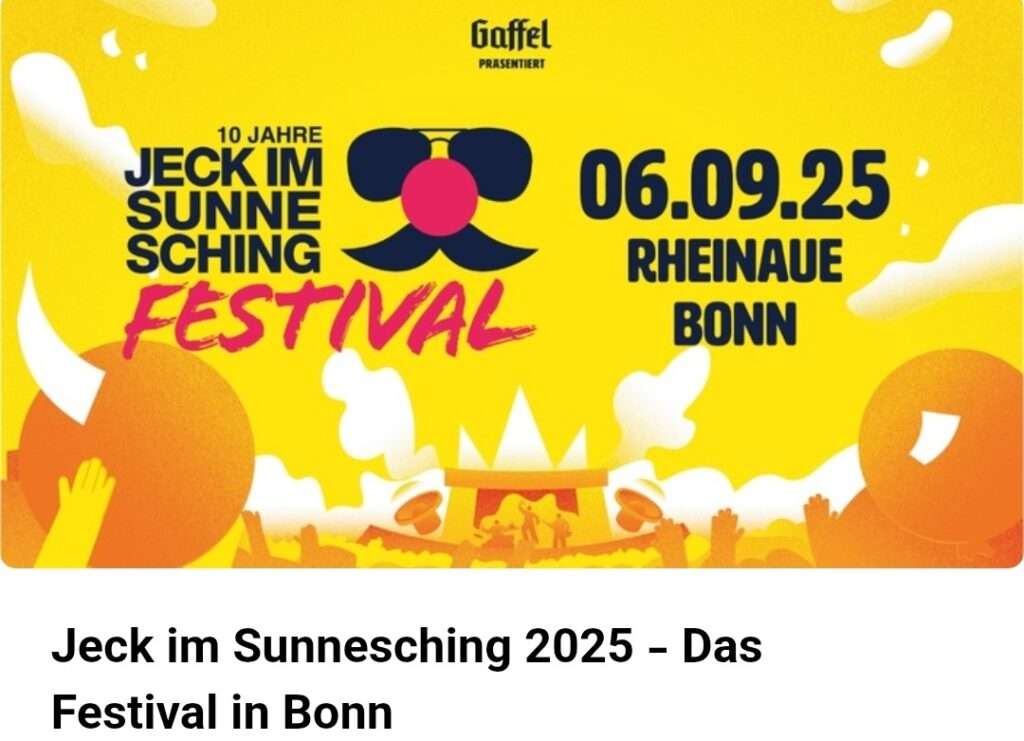
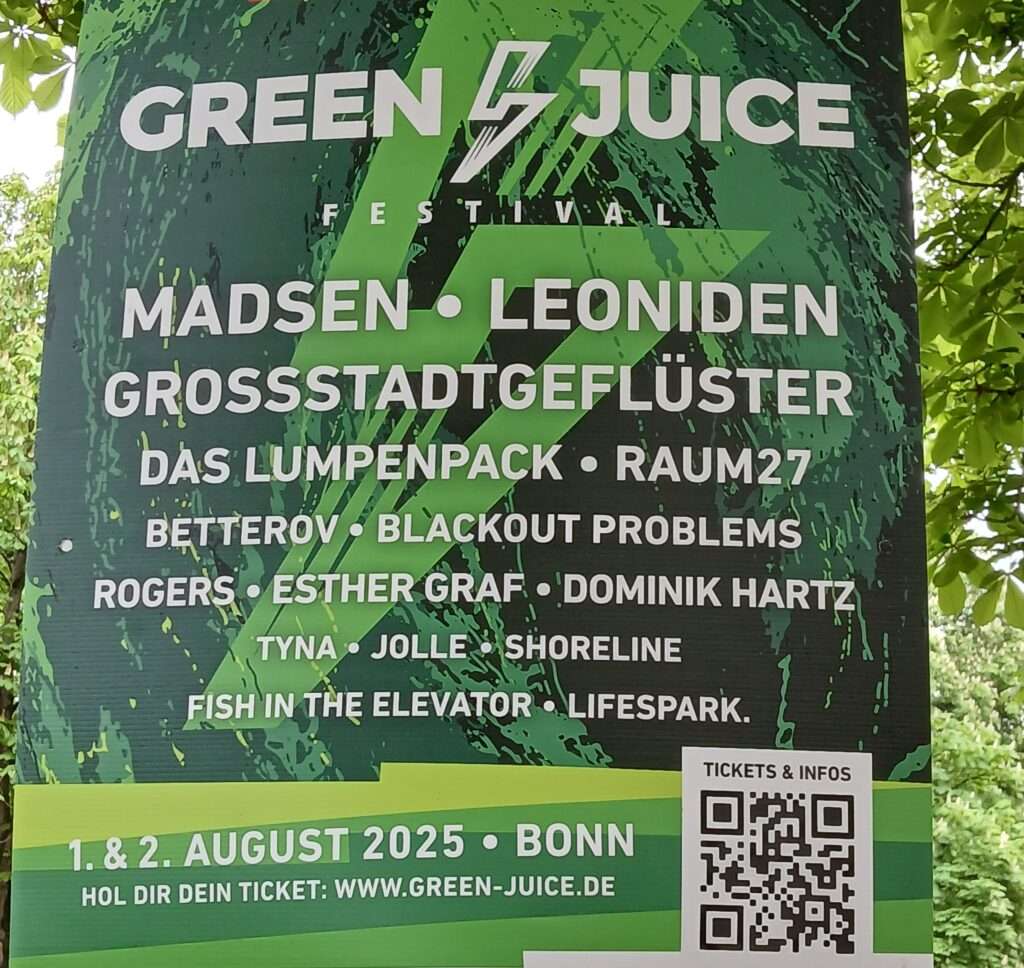

 A Small Town in Germany is one of Le Carré’s lesser-known books. This may be because, unlike most of his works from the 1960s and 1970s, it does not revolve around the theme of the Cold War and does not feature the anti-Bond character George Smiley. Instead, the plot is embedded in the domestic politics of the Federal Republic of Germany and is therefore less accessible to an international audience than the global East-West conflict. It is set exclusively in Bonn and its immediate surroundings. Le Carré draws on his own experiences. From 1961 to 1963, he was stationed in Germany by the British Secret Service working undercover as Second Secretary at the British Embassy in Bonn. At that time writing was a part-time endeavour.
A Small Town in Germany is one of Le Carré’s lesser-known books. This may be because, unlike most of his works from the 1960s and 1970s, it does not revolve around the theme of the Cold War and does not feature the anti-Bond character George Smiley. Instead, the plot is embedded in the domestic politics of the Federal Republic of Germany and is therefore less accessible to an international audience than the global East-West conflict. It is set exclusively in Bonn and its immediate surroundings. Le Carré draws on his own experiences. From 1961 to 1963, he was stationed in Germany by the British Secret Service working undercover as Second Secretary at the British Embassy in Bonn. At that time writing was a part-time endeavour.

 The chapel was dedicated to Saint Gertrude of Nivelles, who lived in the first half of the 7th century. As a patron saint, she had a very broad portfolio. She was invoked against plagues of rats and mice (hence the mice as her attribute), and was considered the protector of travellers, pilgrims and sailors, gardeners, spinners and even cats. In addition, her historically documented commitment to nursing and the education of girls and women is still remembered today.
The chapel was dedicated to Saint Gertrude of Nivelles, who lived in the first half of the 7th century. As a patron saint, she had a very broad portfolio. She was invoked against plagues of rats and mice (hence the mice as her attribute), and was considered the protector of travellers, pilgrims and sailors, gardeners, spinners and even cats. In addition, her historically documented commitment to nursing and the education of girls and women is still remembered today. The building, which was destroyed in 1944, was not an architectural gem and no longer had any great spiritual significance. It was a simple single-nave hall building from the 15th century with modest furnishings. It was originally located directly behind the city wall next to the ‘Gierpforte’ whose name is derived from ‘Gertrud’. Even after the wall was demolished in the 19th century, there was no unobstructed view of the Rhine. A hotel building between the riverbank and the chapel ensured that the backyard situation remained unchanged. The parish church of the district was St. Remigius on what is now Remigiusplatz, with the Gertrudiskapelle chapel merely a branch. For a long time, its main users were the local boatmen and their brotherhood. This Cinderella existence may explain why there was hardly any opposition to the demolition of the little church.
The building, which was destroyed in 1944, was not an architectural gem and no longer had any great spiritual significance. It was a simple single-nave hall building from the 15th century with modest furnishings. It was originally located directly behind the city wall next to the ‘Gierpforte’ whose name is derived from ‘Gertrud’. Even after the wall was demolished in the 19th century, there was no unobstructed view of the Rhine. A hotel building between the riverbank and the chapel ensured that the backyard situation remained unchanged. The parish church of the district was St. Remigius on what is now Remigiusplatz, with the Gertrudiskapelle chapel merely a branch. For a long time, its main users were the local boatmen and their brotherhood. This Cinderella existence may explain why there was hardly any opposition to the demolition of the little church.
 In the first phase the white-flowered cherries, such as the plum cherry in Wolfstraße, Franzstraße or in the Rheinaue, bloom. After that it takes about 14 days for the thick pink-flowered Japanese flowering cherries (especially in Breite Straße and Heerstraße) to delight the eye.
In the first phase the white-flowered cherries, such as the plum cherry in Wolfstraße, Franzstraße or in the Rheinaue, bloom. After that it takes about 14 days for the thick pink-flowered Japanese flowering cherries (especially in Breite Straße and Heerstraße) to delight the eye.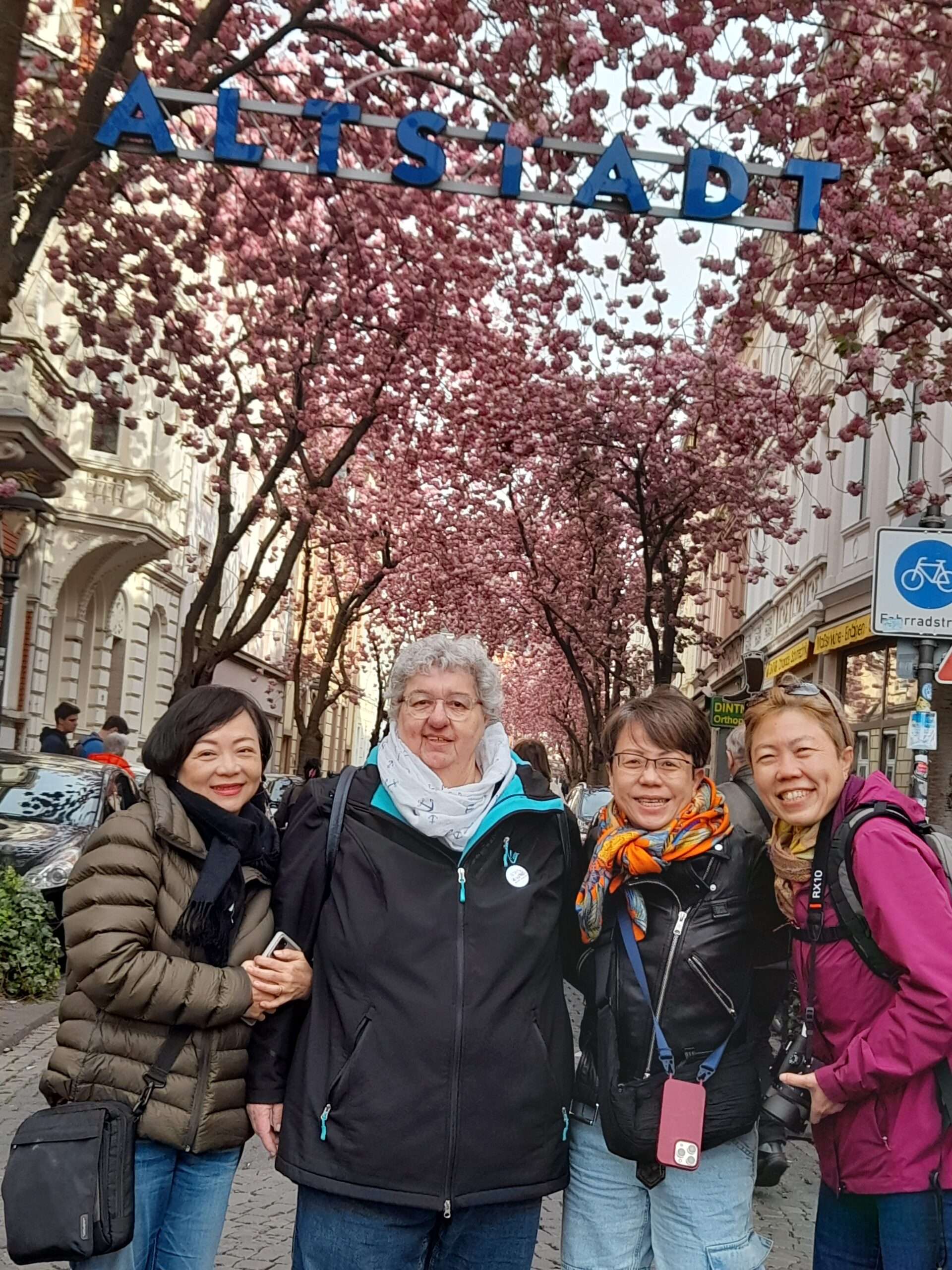
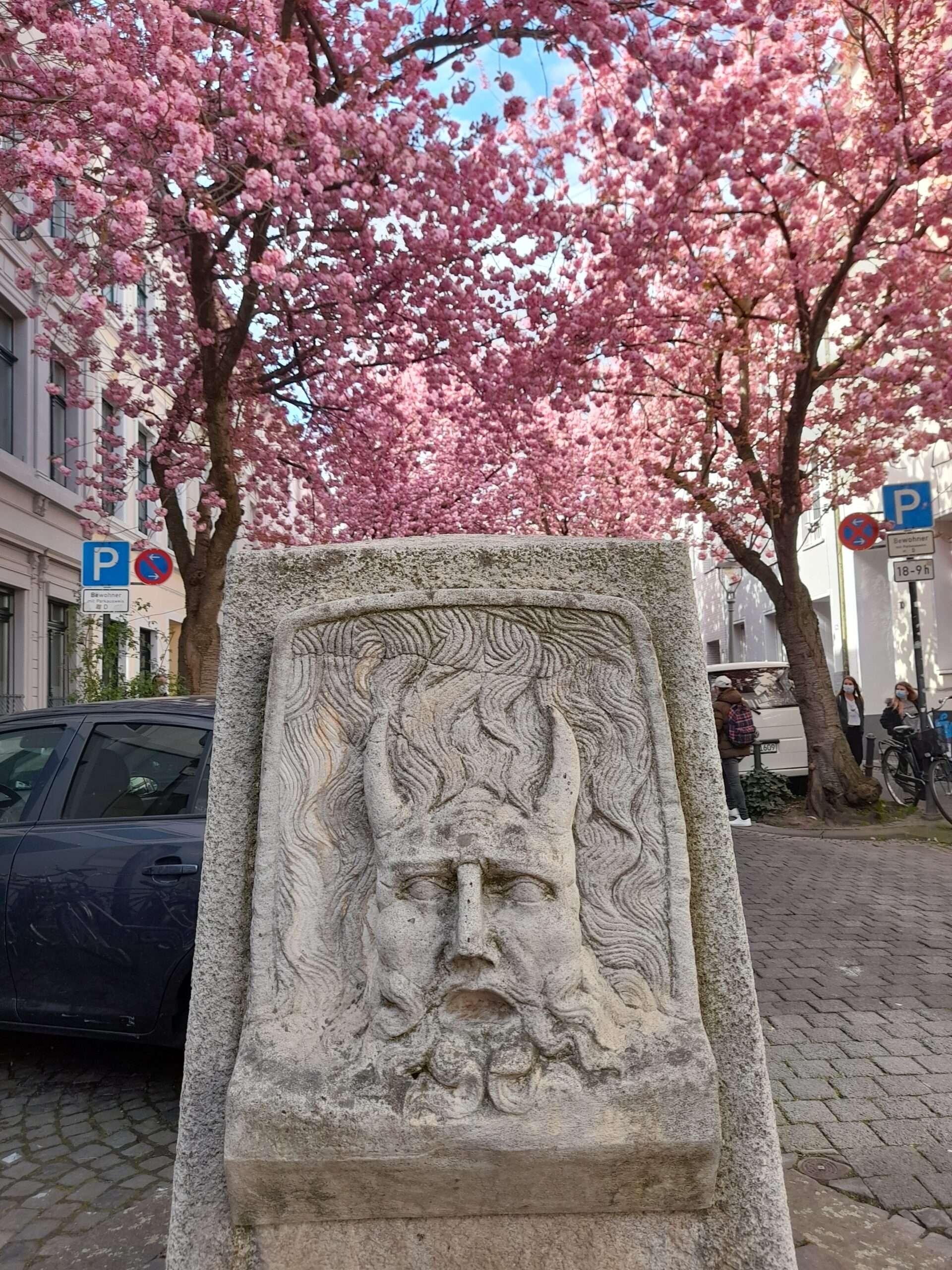
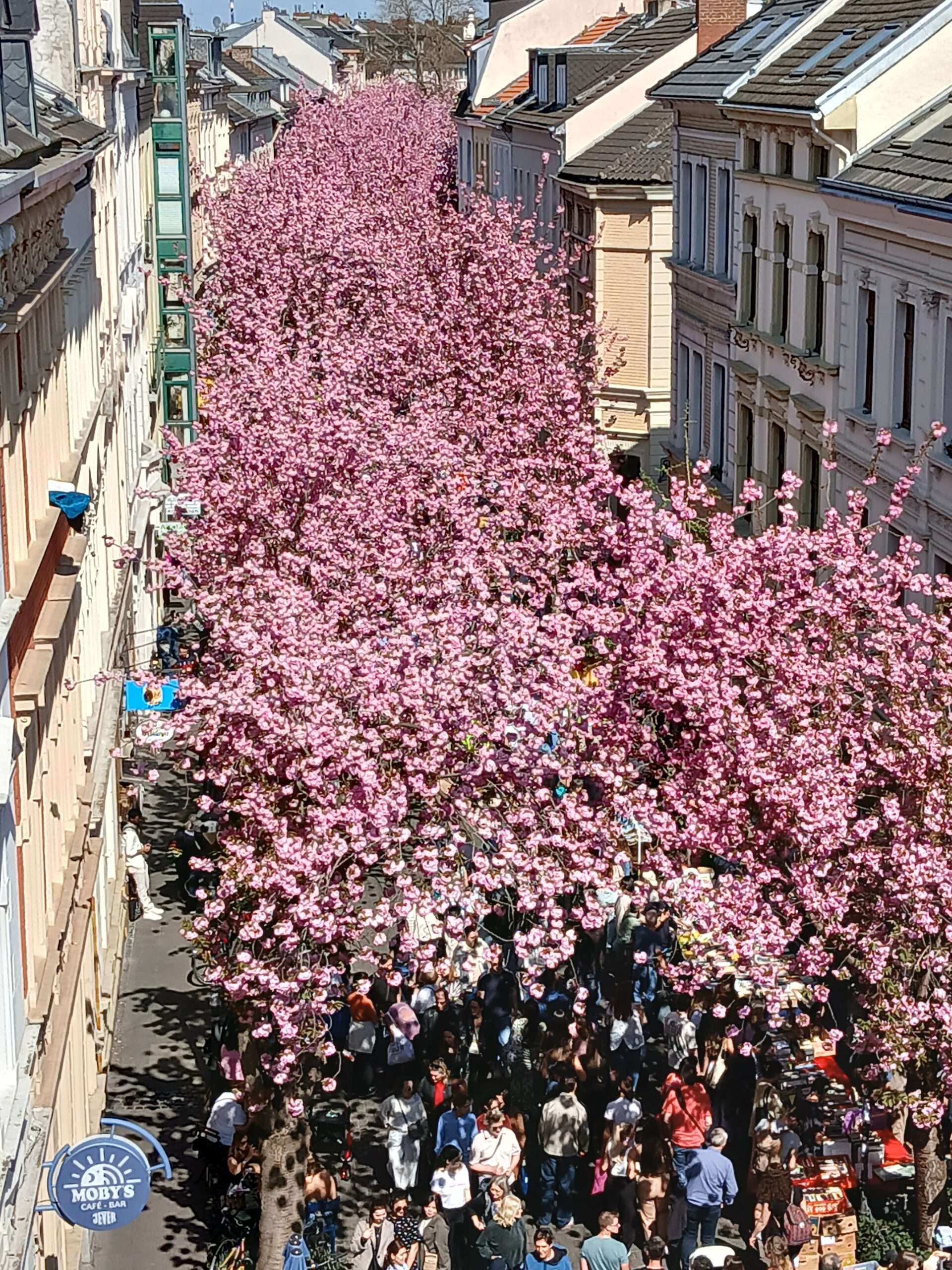

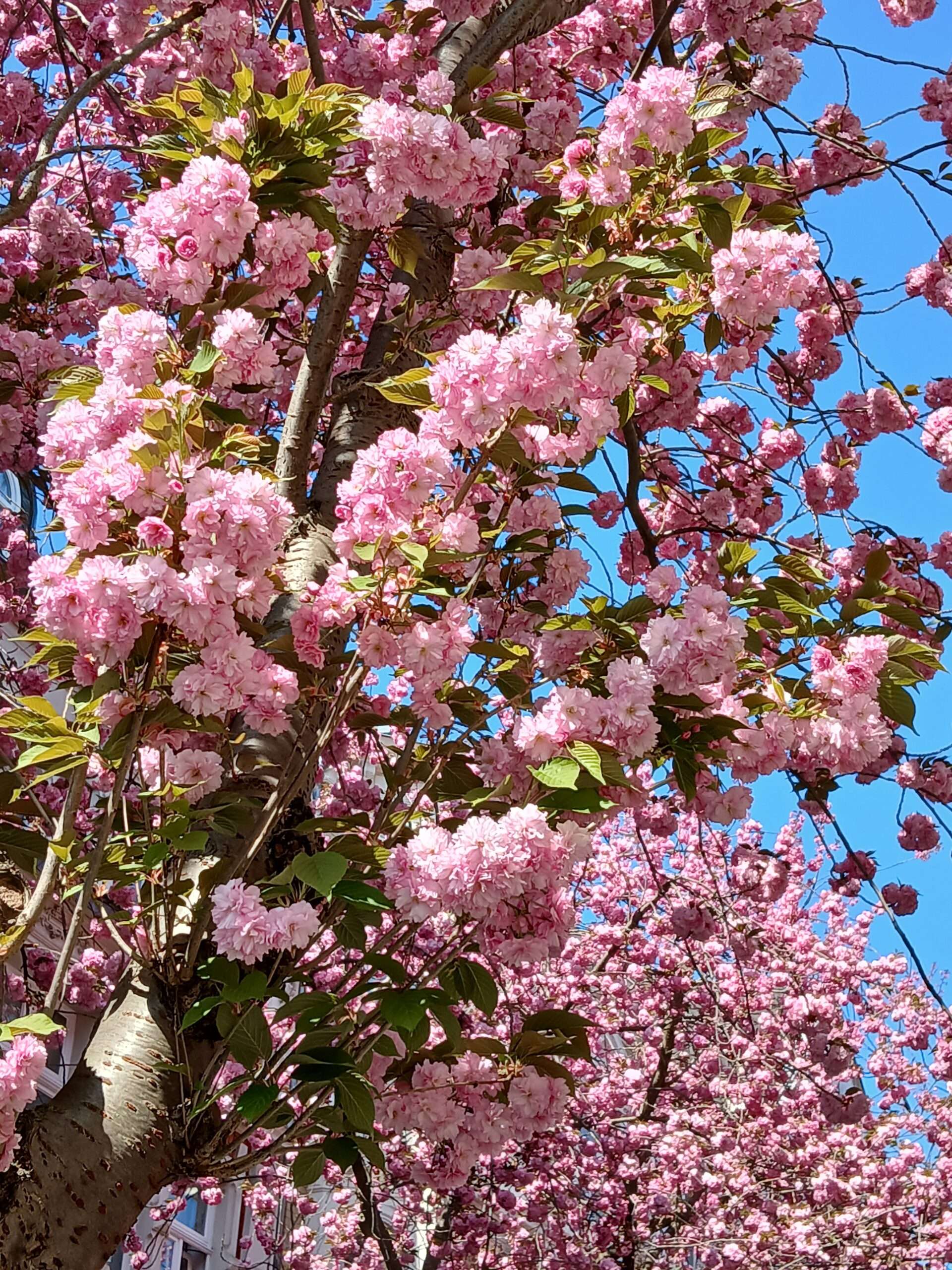
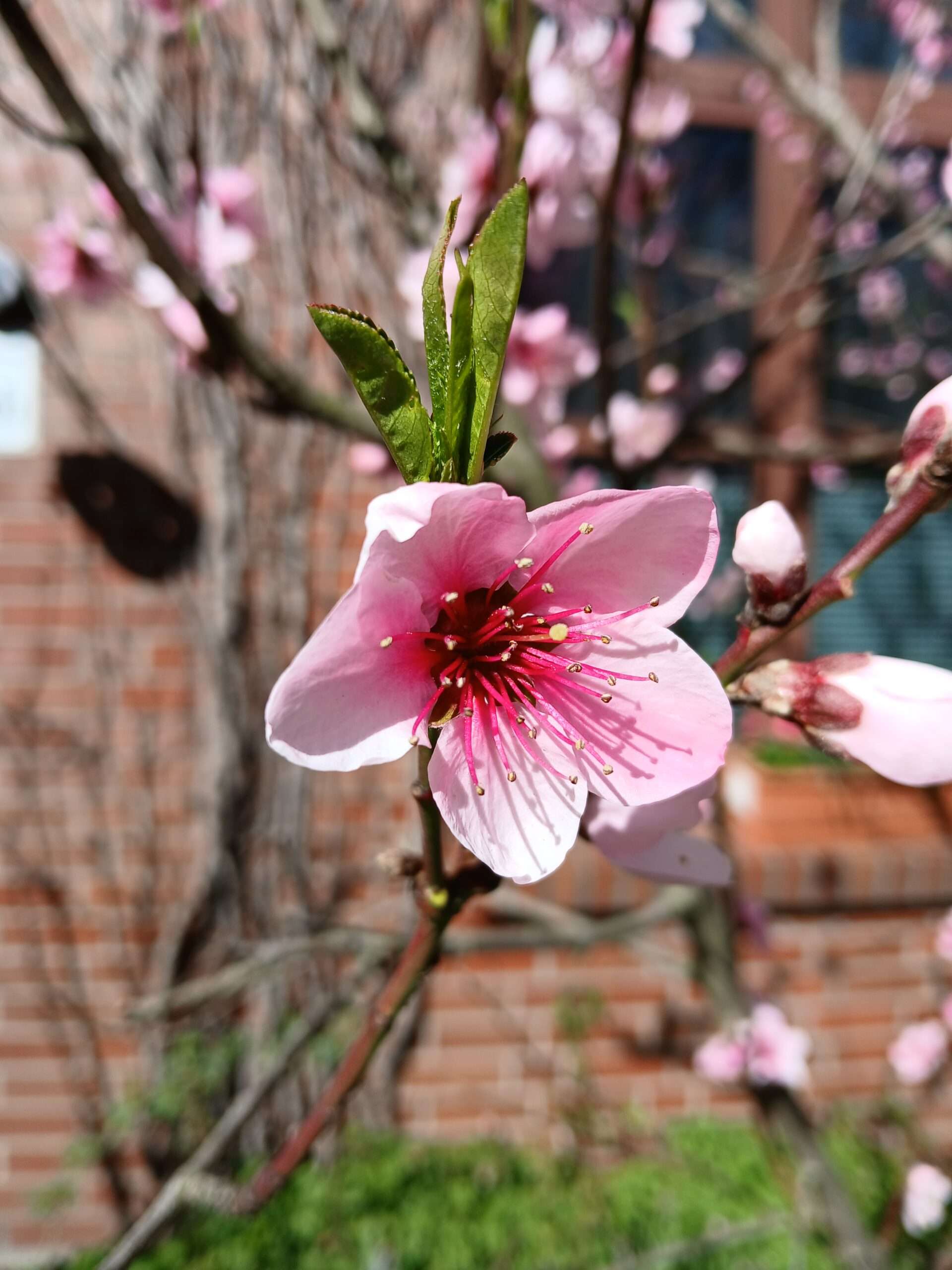

 From the terrace of the castle, you can see as far as Cologne Cathedral and, of course, the whole of Bonn. The view, under a bright blue sky, is truly magical. Fortunately in the 1970s a citizens’ initiative was able to save the castle from demolition with a view to construct a motorway junction.
From the terrace of the castle, you can see as far as Cologne Cathedral and, of course, the whole of Bonn. The view, under a bright blue sky, is truly magical. Fortunately in the 1970s a citizens’ initiative was able to save the castle from demolition with a view to construct a motorway junction.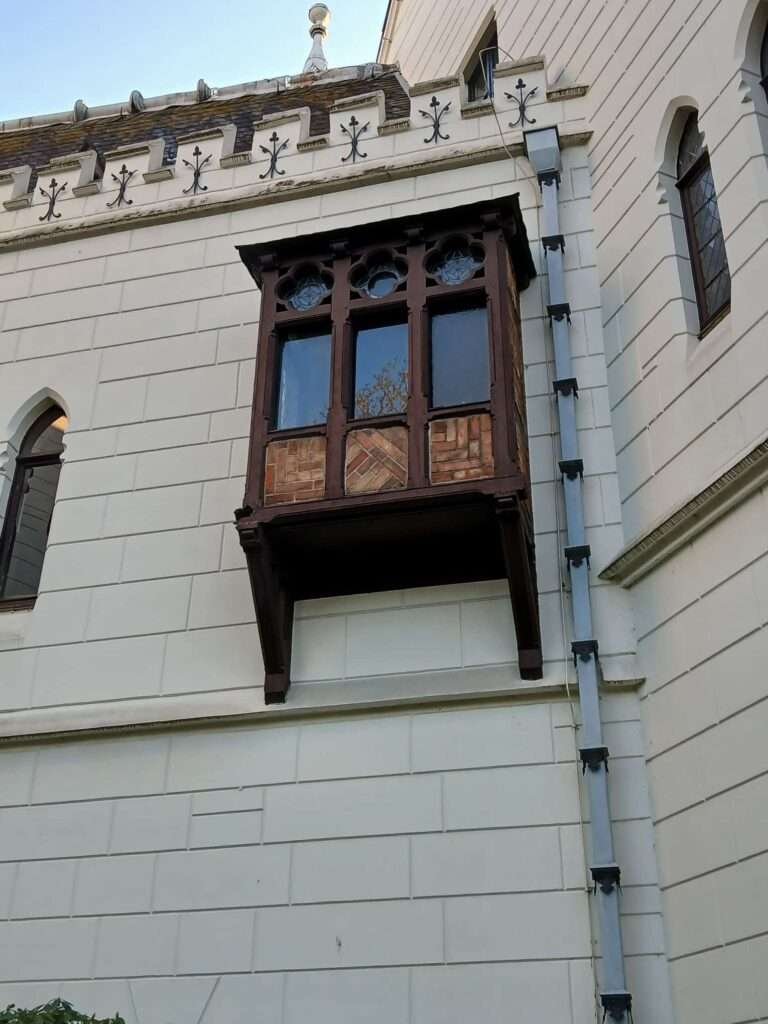
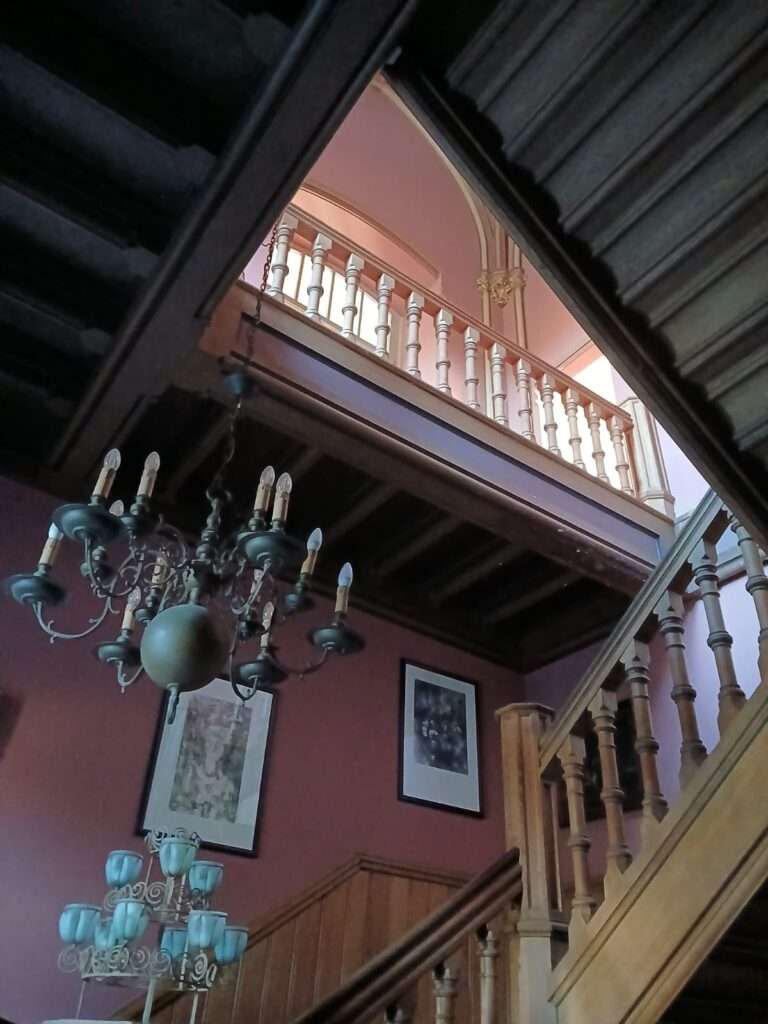

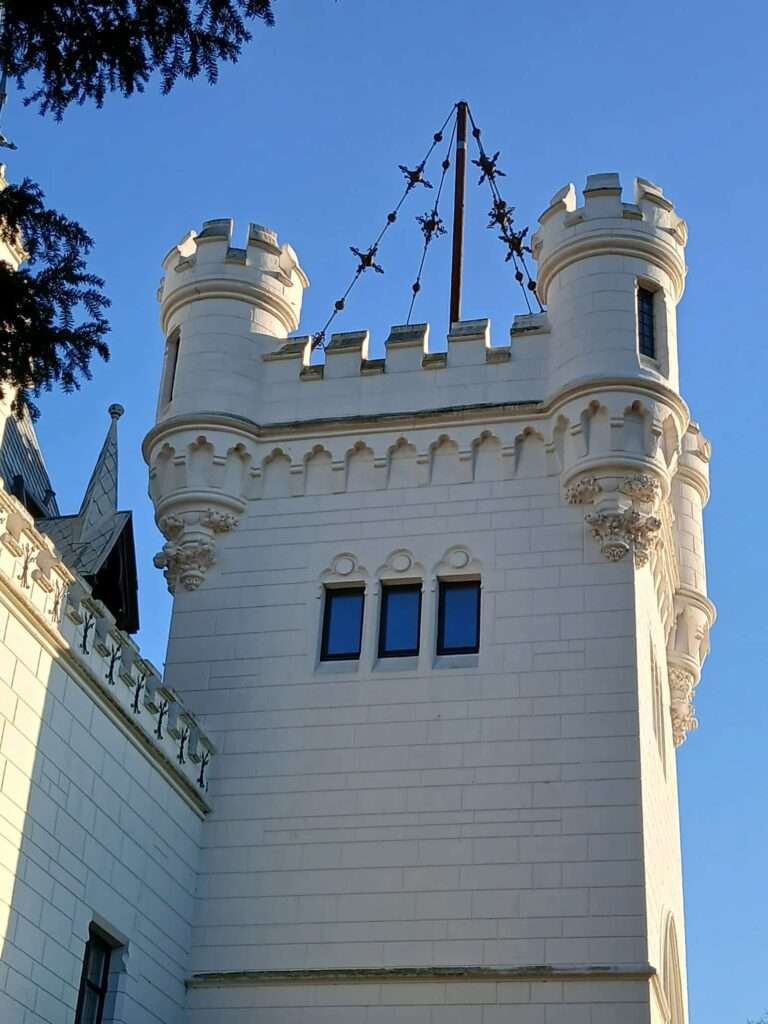
Recent Comments